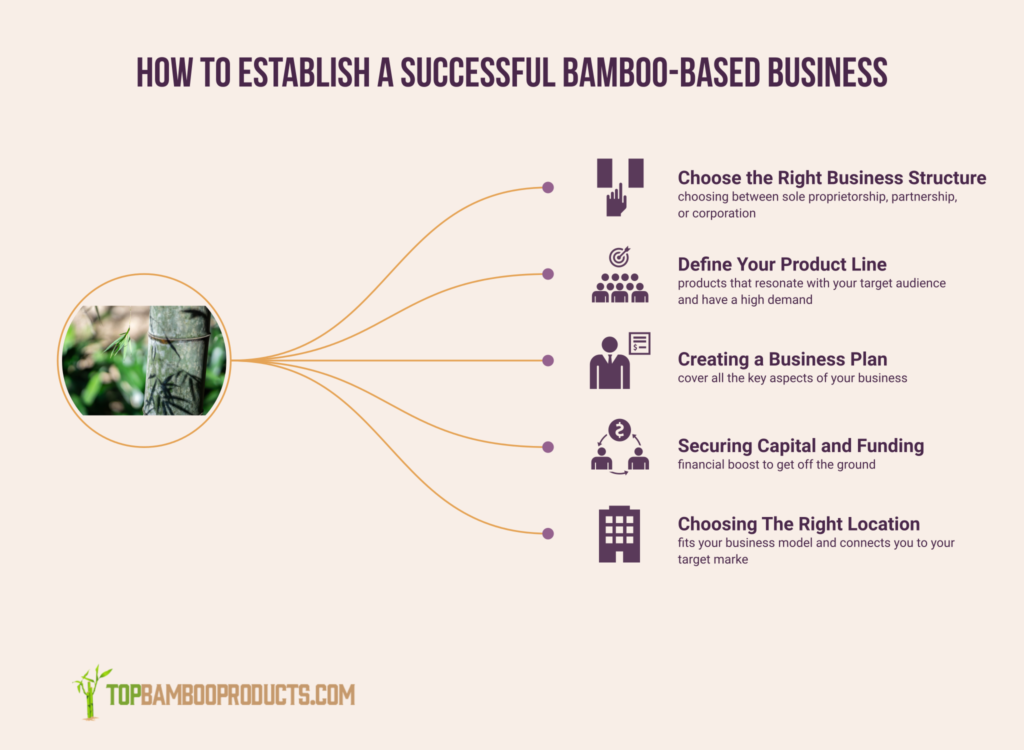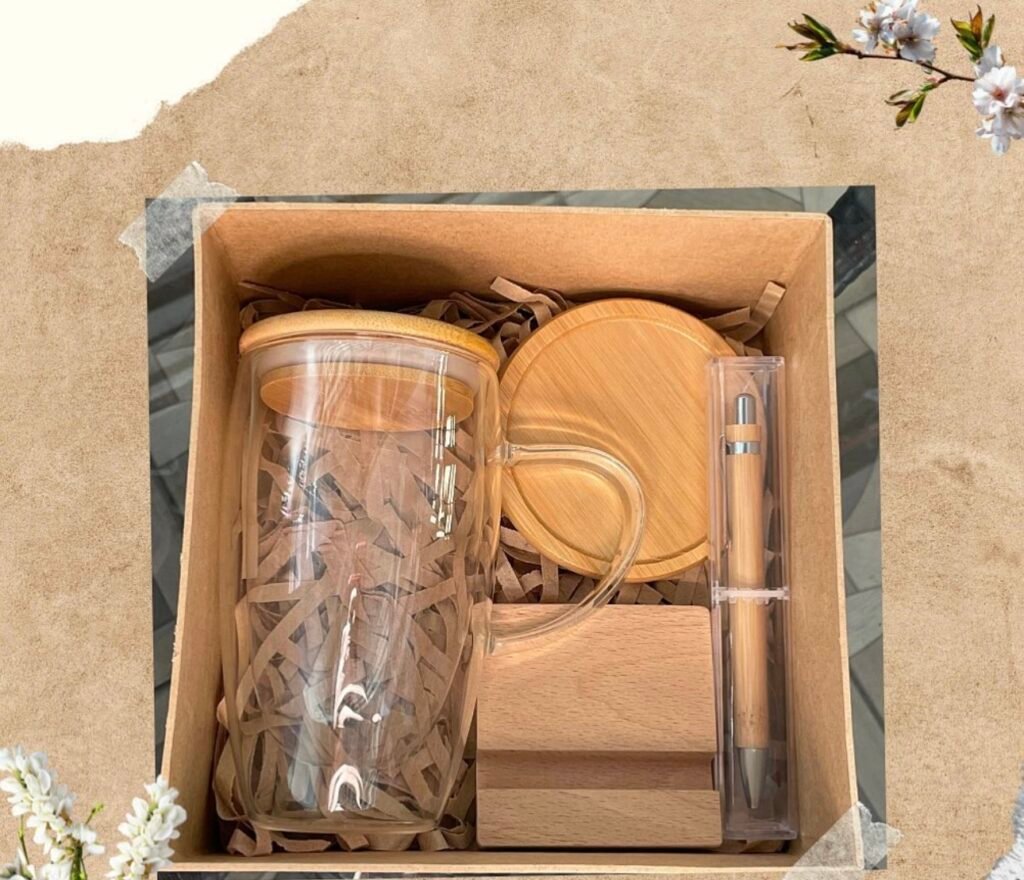How To Start A Bamboo Product Business?
0Shares
Did you know that the global market for bamboo products is projected to reach $98.3 billion by 2025? This remarkable surge reflects an increasing sustainability awareness and a shift towards eco-friendly consumer choices. If you’ve ever wondered how to start a bamboo product business, you’re not alone. As a burgeoning industry, bamboo products offer an exciting venture for aspiring entrepreneurs.
In this article, we’ll explore the various steps in setting up your bamboo product enterprise. From understanding the market dynamics to sourcing materials, production, marketing, and sales, we’ll guide you through the process, ensuring you know how to successfully enter this rapidly growing market.
Why Bamboo Products?

So, you might be wondering, “Why bamboo?” Bamboo isn’t just any plant—it’s a superstar of the plant world! This fast-growing, renewable, and versatile resource has the potential to replace wood, plastic, and even metal in many applications. Its strength and durability make it ideal for various products, from furniture and home decor to clothing, accessories, and beyond.
Plus, bamboo has a unique aesthetic appeal that’s widely appreciated. Its natural, earthy vibe can add an appealing touch to any product, making it more attractive to eco-conscious consumers.
So, in essence, choosing bamboo isn’t just a smart business decision—it’s also a step towards promoting sustainability and making our planet a better place. Isn’t that a great goal for any entrepreneur?
Researching The Bamboo Products Market

As with any venture, market research is key. Before you can start your bamboo product business, getting a holistic understanding of the industry landscape is essential.
✅ Identifying Key Players in the Bamboo Products Market
When starting in the bamboo business, knowing who the big players are is crucial. These companies have made their mark in the industry, and learning from their successes (and mistakes) can be incredibly useful. Do some research, find out who they are, what products they offer, and how they operate. This will give you a clearer picture of the competition and potentially reveal gaps in the market that your business could fill.
✅ Recognizing Popular Bamboo Products
Knowing what products are popular is an important piece of the puzzle. While bamboo’s versatility is one of its great strengths, not all bamboo products are created equal in the eyes of consumers. Some products, like bamboo utensils, toothbrushes, and reusable straws, have gained significant popularity due to their eco-friendly nature and everyday utility.
Take the time to understand which bamboo products are in demand and why. This could be intrinsic to shaping your product range.
✅ Market Trends and Predictions
Staying ahead of the curve requires understanding the current market trends and future predictions. Consumer trends are shifting towards sustainability, with more and more people willing to pay a premium for eco-friendly products. The bamboo industry is predicted to continue to grow in the coming years.
Keep a close eye on these trends; they can help you make informed decisions regarding product development, marketing strategies, and more. Remember, in business, knowledge is power!
Setting Up Your Bamboo Product Business

Armed with market insights, it’s time to start setting up your business. Here are a few tips and tricks to help you get started:
✅ Choose the Right Business Structure
The first step is deciding on the right business structure for your venture. Generally speaking, choosing between sole proprietorship, partnership, or corporation (S or C) comes down to personal preference and business needs. It’s wise to seek legal advice before making a decision and keep in mind the various implications of each structure regarding taxes, liability, and other factors.
✅ Define Your Product Line
Defining your product line might sound easy, but it’s a delicate balancing act. On the one hand, you want to release products that resonate with your target audience and have a high demand in the market. On the other hand, you don’t want to spread yourself too thin by offering a wide array of products right off the bat.
Remember, it’s okay to start small! You could perhaps begin with a few core products that are easy to produce and have a proven market demand. Bamboo toothbrushes, cutlery, or reusable straws are great examples. These products help consumers make an eco-friendly choice and are also items everyone uses daily.
Once your business is up and running, you can gradually introduce new products based on the feedback and demands of your customers. This will allow you to grow your business organically and effectively.
Keep in mind quality always trumps quantity. It’s far better to offer a few exceptional products that customers love and trust than a wide range of mediocre products. After all, happy and satisfied customers are the best brand ambassadors you could ever wish for!
✅ Creating a Business Plan
Having a solid business plan is like having a compass during a road trip. It’s not just a document but a guide that gives direction, helps you to anticipate bumps along the road, and keeps you focused on your destination. So, don’t rush this part; give it the attention it deserves!
So, you might be thinking, “What should my business plan include?” Great question! It should cover all the key aspects of your business—everything from the products you plan to sell, your target audience, marketing, and sales strategies to your financial projections. Think of it as a blueprint of your business, laying out the steps you plan to take to make your bamboo product dream a reality.
While drafting your business plan, be sure to include a SWOT analysis. That’s a fancy term for identifying your Strengths, Weaknesses, Opportunities, and Threats. This analysis can give you a clear view of where you stand and help you to shape your strategies effectively.
Remember, your business plan isn’t set in stone. It’s a living document that should evolve with your business. So feel free to revisit it and make changes as and when necessary. After all, flexibility and adaptability are keys in the ever-changing business world.
✅ Securing Capital and Funding
Raising funds for your business can feel a bit like standing at the foot of a mountain, but don’t worry! We’ve all been there. Most businesses need some financial boost to get off the ground. You may have a brilliant idea and a solid business plan. Still, without the necessary capital, it would be like having a car without fuel.
So how can you secure that all-important funding? There are several routes you can explore. First, self-funding or bootstrapping is a viable option if you have some savings. This can be a great way to start, as it doesn’t involve any complicated paperwork or interest rates. However, it’s important to remember that you shouldn’t put all your eggs in one basket. Diversifying your sources of funding can provide financial security for your business.
Another route is seeking capital from investors. This can be through venture capitalists, angel investors, or friends and family. Pitching your business idea to potential investors requires preparation and confidence. Remember to emphasize the viability of your bamboo product business, its growth potential, and your passion and commitment to making it a success.
Finally, there’s the option of applying for business loans. While this does involve interest and repayments, it can be a good option if you have a strong business plan and are confident about your future revenue.
Securing capital is more of a marathon than a sprint. It may take time, and you’ll likely face some rejection along the way. But with persistence, a solid business plan, and a dash of entrepreneurial grit, you’ll be well on your way to kickstarting your bamboo product business!
✅ Choosing The Right Location
Location plays a critical role when starting a bamboo product business. It’s like finding the right soil to plant your seeds. You need to find a place that fits your business model and connects you to your target market. If you plan to run a physical store, consider factors such as foot traffic, proximity to similar businesses, and local demand for eco-friendly products.
On the other hand, if you’re going online, pay attention to the digital “location” as well. This could mean choosing the right e-commerce platform or social media channels based on where your potential customers hang out the most. Whatever route you choose, remember that your location, physical or digital, should be where your bamboo products can shine the brightest!
Oh, and don’t forget about your supply chain! Proximity to your suppliers, cost of transportation, and storage facilities can significantly impact your bottom line. So, choose wisely!
Sourcing Bamboo and Production

Let’s now dive into one of the most crucial aspects of starting a bamboo product business – sourcing the bamboo and setting up your production process.
✅ Sourcing Sustainable Bamboo
When it comes to sourcing bamboo, it’s about more than just finding a supplier. It’s about finding the right supplier who prioritizes sustainability. Bamboo is hailed as eco-friendly due to its incredible growth rate and minimal pesticide need.
However, if it’s not harvested responsibly, it can still have a negative impact on the environment. So you’ll want to partner with suppliers who practice sustainable harvesting methods.
You might be wondering, “Where do I find such suppliers?” That’s a fantastic question! Countries like China, India, and Thailand are some of the leading bamboo producers. Consider reaching out to suppliers in these countries.
But remember, always do your due diligence. Ask for certifications, check their sustainability practices, and don’t be shy to ask questions!
✅ Setting up a Production Process
Now, let’s move on to setting up your production process. Organizing a streamlined and efficient production line is like setting the rhythm for a smooth dance performance. You’ll want to plan out each step carefully, from the initial processing of raw bamboo to the final packaging of the product.
Consider factors such as the machinery needed, labor costs, design complexity, and production time. Would you need to outsource any part of the process, or can you manage it in-house? Would handmade or machine-made products fit your brand better? Mull over these details and set up a process that aligns with your business goals and brand ethos.
✅ Quality Control and Standards
Last but definitely not least, let’s talk about quality control and standards. You see, consistently producing high-quality products isn’t just a business strategy – it’s a promise to your customers.
Establishing strict quality control measures is crucial. This could involve regular inspections, product testing, and stringent checks at each stage of the production process. You want to ensure that each bamboo product from your production line is perfect!
Additionally, adhering to industry standards and obtaining relevant certifications can increase the credibility of your products. Not only does this assure customers of your product’s quality, but it can also enhance your brand’s reputation in the market.
Marketing and Sales

Okay, so the bamboo product business is up and running. But how do you get the word out? That’s where marketing and sales come into play. You’ll need to create an effective marketing plan to ensure your products reach potential customers.
✅ Branding Your Bamboo Product Business
Let’s start with branding. Think of it as creating the personality of your business. Your brand tells your story, defines your mission, and creates an emotional connection with your customers. For your bamboo product business, your brand might revolve around sustainability, eco-friendliness, and innovative design.
Use these values to design your logo, choose your color scheme, and develop your brand voice. Remember, a strong brand is like a lighthouse – it stands out in the market and guides your customers toward you.
✅ Setting Up a Website and Online Sales
In the digital age, having an online presence is a must. Your website is your online storefront – it’s where customers get to know your products, your brand, and your story. Make sure your website is easy to navigate, visually appealing, mobile-friendly, and includes clear calls to action (like the ‘Buy Now’ buttons).
And remember to set up an efficient online sales system. Ensure your payment process is secure and user-friendly to provide your customers with a seamless shopping experience. To give you a better idea, here’s a video on how to set up an e-commerce website.
✅ Marketing Strategies for Bamboo Products

Ah, marketing! It’s the magic word that can transform your bamboo product business from a hidden gem into a shining star. To kick things off, consider leveraging content marketing. You could write blogs about the benefits of bamboo products or create engaging videos demonstrating your products. Social media platforms like Instagram and Pinterest are also perfect for showcasing your eco-friendly products. Paid advertising, such as Google Ads or social media ads, can also help reach a wider audience.
Don’t forget about the power of email marketing. Building an email list and sending out regular newsletters is a fantastic way to keep your customers engaged and informed about new products or sales.
✅ Offline Strategies
Offline marketing is also an important part of the puzzle. Participating in trade shows or conferences related to eco-friendly products can present you with great networking opportunities. You could also partner with influencers or local stores to promote your products and services.
Business Operations

Now that you’re familiar with crafting the perfect bamboo product and getting it to customers let’s dive into the nitty-gritty of business operations. This is where the magic happens behind the scenes!
✅ Hiring and Managing Staff
When running a successful bamboo product business, people power is your secret weapon. You’ll need a dedicated team to help you bring your vision to life. Depending on your business model, you may need skilled artisans, savvy marketers, customer service superheroes, logistics geniuses, and maybe even a number cruncher or two!
Recruiting and managing staff is a delicate dance. You want to find the right people who share your passion for bamboo products and sustainability while possessing the skills to do the job. Once you’ve got your dream team, managing them effectively and maintaining a positive work environment is critical. Remember, a happy team is a productive team!
✅ Business Accounting and Financial Management
Next is the less glamorous but equally important world of business accounting and financial management. This is all about keeping a close eye on your money – where it’s coming from, where it’s going, and ensuring there’s always enough in the bank.
You’ll need to set up a strong financial management system. This includes tracking income and expenses, managing cash flow, setting budgets, and making informed financial decisions. Consider investing in good accounting software or hiring a professional accountant to help you stay on top of things. Remember, financial health is vital for your business’s survival and growth!
✅ Legal Requirements and Licensing
Last but certainly not least are the legalities. Starting a bamboo product business involves certain legal requirements and licensing. These can vary depending on your location, the size of your business, and the nature of your products.
You may need to register, obtain a business license, and comply with local and national regulations. Don’t forget about intellectual property laws if you’re creating unique designs. It’s always a good idea to consult a lawyer to ensure you’re ticking all the legal boxes. After all, you wouldn’t want your bamboo business dreams to be cut down by red tape!
Running a business is a lot like conducting an orchestra. You’ll create a symphony of success for your bamboo product business with the right team, sound financial management, and a solid understanding of your legal obligations.
Frequently Asked Questions
Q: What are some disadvantages of running a bamboo product business?
A: As with any business, certain risks and challenges are associated with running a bamboo product business. These may include competition from other bamboo products on the market, changing consumer demand, supply chain disruptions, and administrative complexity. It’s important to do your research and be aware of these potential pitfalls before diving in. That said, the rewards can be great with the right strategies and commitment!
Q: What are some viable business ideas in the bamboo industry?
A: There is a wide range of business ideas in the bamboo industry, given the plant’s versatility. You can consider manufacturing and selling bamboo furniture, utensils, building materials, or clothing. Another option is to offer services related to bamboo farming, like consultancy or bamboo seedling supply.
Q: What is the profitability of a bamboo company?
A: Thanks to the growing demand for eco-friendly and sustainable products, bamboo companies can be quite profitable. However, the profitability will depend on several factors, including the type of bamboo products you sell, your pricing strategy, operational costs, and your marketing efforts.
Q: Is growing bamboo profitable in South East Asia?
A: Yes, growing bamboo can be profitable in South East Asia. The region’s favorable climate and soil conditions make it ideal for bamboo cultivation. Plus, there’s a high demand for bamboo in local and international markets due to its many uses in construction, furniture making, and textile industries.
Q: How can I scale my bamboo farm operation?
A: To scale your bamboo farm operation, you might consider investing in advanced farming techniques, expanding the acreage under bamboo cultivation, and diversifying the range of bamboo species you grow to cater to varied market demands. Additionally, partnering with other businesses in the bamboo industry for supply contracts can help grow your operation.
Final Words
Starting a bamboo product business is undoubtedly an exciting journey, brimming with opportunities to create sustainable and eco-friendly products that today’s environmentally conscious consumers crave. The path to success, though, can be challenging and requires a harmonious blend of creativity, team management, financial acumen, and a thorough understanding of legal obligations.
But fear not! With the right strategies in place, this venture can yield great financial returns and contribute substantially towards a greener planet. So, gear up, embrace the challenges, and let’s march together toward a sustainable future. Remember, in the world of bamboo, the sky’s the limit!
0Shares
